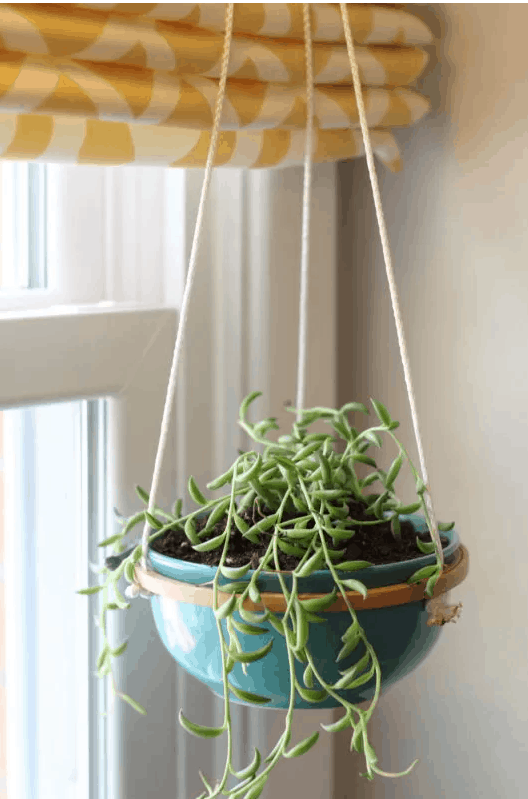A hanging garden on your balcony offers vibrant natural beauty right outside your window. Even when you have limited room, you can still grow flowers, herbs, or leafy plants by utilizing vertical designs.
So, let’s take a look at what you need to know about turning your balcony space into a glorious and green hanging garden.

image source: The Kitchen Garten
Choosing the Best Plants for Vertical Growth
When creating a hanging garden, selecting plants that naturally thrive vertically is crucial. Look for trailing or vining varieties like ivy, pothos, or jasmine.
Herbs such as mint and basil adapt well to vertical settings too. They grow easily in confined areas and offer culinary benefits. For flower enthusiasts, consider nasturtiums or petunias – both will add vibrant colors without overwhelming space constraints.
Evaluate sunlight conditions before picking your plant assortment. Certain options need more light than others to flourish fully on your balcony’s vertical stage.
Innovative Planter Designs for Space Efficiency
To maximize your balcony space, use unique hanging planters. Options range from stylish brass planters to wall-mounted baskets.
Consider modular planter systems that allow rearrangement and adaptability as your plants grow. This flexibility lets you cater to seasonal changes or even swap out plants without disrupting the overall setup.
In addition to purchasing planters, consider upcycling everyday items like old buckets or tins. Hanging racks can double as plant holders too – and they provide easy access for watering and maintenance tasks.
Maximizing Sunlight on Your Balcony Garden
Sunlight is key to a flourishing hanging garden. Start by assessing how much natural light your balcony receives daily. Morning sun can benefit most plants, so position planters accordingly.
Use adjustable hooks or pulley systems for movable plant setups, letting you chase the sun as needed throughout different seasons. If your space faces a shadowy direction, try mirrors or reflective surfaces to amplify sunlight exposure.
Select shade-tolerant plants like ferns if bright light remains elusive.
A solar-powered LED grow light could also supplement natural illumination when winter clouds dominate the sky.
Maintaining Your Hanging Garden Through Seasons
A thriving hanging garden requires season-specific care.
In spring, invigorate plants with fresh soil and nutrients to kickstart growth. As summer heats up, ensure consistent watering and shield delicate foliage from intense sunlight using shade cloths.
During the fall, prune back excess growth to prepare for dormancy while preserving energy for the coming cold months. Use frost protection materials or bring susceptible plants indoors as temperatures dip in winter.
Always monitor pest activity regardless of the season since cramped balcony conditions can sometimes exacerbate infestations quickly.
Adapt your gardening techniques throughout each year to nurture resilient flora all year round.
Utilizing Smart Irrigation Systems for Small Spaces
Small balcony gardens will benefit greatly from smart irrigation systems.
These systems offer precision watering. By using app-controlled devices, you can manage water schedules and ensure your plants stay hydrated even when you’re not home. Sensors assess soil moisture levels and adjust water delivery accordingly, preventing overwatering that often plagues compact gardens.
For a sustainable approach, connect these systems to rainwater collection setups if possible.
Look into solar-powered options too – they’re perfectly suited for outdoor installations without additional energy costs.
Embrace modern technology to keep your hanging garden lush with minimal hassle year-round.
The Bottom Line
Creating a hanging garden on your balcony turns limited space into a vibrant haven. By selecting the right plants, using innovative planters, and optimizing conditions, you can enjoy nature’s beauty year-round.
So, embrace this creative approach to transform even the smallest urban setting into a thriving green escape.
